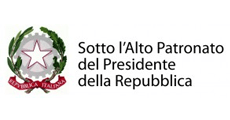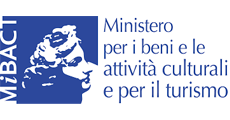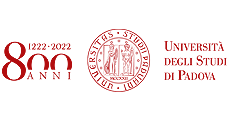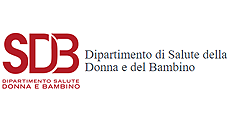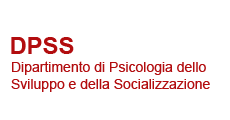Exergo e Citazioni
LE SEZIONI DELLA MOSTRA : exergo e citazioni
SECTIONS OF EXHIBITION : highlights and quotations
INIZIO / INCEPTION
L’uomo è un essere che non esiste al singolare
No human being knows what is man in the singular
Hanna Arendt1
Lo spirito della partenza è il momento più meraviglioso in qualsiasi momento per qualsiasi cosa. Perché nell’inizio c’è il seme di tutto quello che dovrà seguire. Una cosa è incapace di avere inizio a meno che non contenga tutto ciò che potrà mai nascere da essa. È questa la caratteristica dell’inizio, altrimenti non c’è inizio – è un falso inizio.
The spirit of start is the most marvellous moment at any time for anything. Because in the start lies the seed for all things that must follow. A thing is unable to start unless it can contain all that ever can come from it. That is the characteristic of a beginning, otherwise it is no beginning – it is a false beginning.
Louis Khan, Silence and Light2
- FORMAZIONE / EDUCATION
Insegnare è imparare due volte
To teach is to learn twice over
Joubert 3
Attraverso il contatto delle mani il bambino capta tutto: il nervosismo o la tranquillità, l’incertezza o la sicurezza, la tenerezza o la violenza. Sa se le mani lo desiderano. O se sono distratte. O, ciò che è peggio, se lo rifiutano. Davanti a delle mani premurose, affettuose, il bambino si abbandona, si apre. Davanti a delle mani rozze, ostili, si isola, si nasconde, si chiude. Di modo che, prima di animarsi a inseguire le onde che percorrono il suo piccolo corpo, basta lasciar riposare le mani immobili sul bambino. Delle mani che non devono essere inerti, distratte, assenti. Ma delle mani attente, vive, che inseguano e osservino il minimo sussulto del bambino. Mani leggere, non autoritarie. Che non chiedono nulla. Che sono semplicemente lì. Leggere, ma piene di tenerezza. E di silenzio.
But our hands may also remain immobile. The hands that touch the child reveal everything to it: nervousness or calm, clumsiness or confidence, tenderness or violence. The child knows if the hands are loving. Or if they are careless. Or worse, if they are rejecting. In attentive and loving hands, a child abandons itself, opens itself up. In rigid and hostile hands, a child retreats into itself, blocks out the world. So that before we even think of recreating the prenatal rhythms which once flowed around this little body, we must let our hands lie on it motionless. Not hands that are inert, perfunctory, distracted. But hands that are attentive, alive, alert, responsive to its slightest quiver. Hands that are light. That neither command nor demand. That are simply there. Light…and heavy in the weight of tenderness. And of silence.
Frédérich Leboyer, Per una nascita senza violenza4
- CAMMINO / PATH
Non ci sono vie, la via sia fa camminando
There is no path. The path is made by walking
Antonio Machado5
“Quando il viaggiatore si è seduto sulla sabbia della spiaggia e ha detto: “Non c’è altro da vedere”, sapeva che non era vero. Bisogna vedere quel che non si è visto, vedere di nuovo quel che si è già visto, vedere in primavera quel che si è visto in estate, vedere di giorno quel che si è visto di notte, con il sole dove la prima volta pioveva, vedere le messi verdi, il frutto maturo, la pietra che ha cambiato posto, l’ombra che non c’era. Bisogna ritornare sui passi già dati, per ripeterli, e per tracciarvi a fianco nuovi cammini. Bisogna ricominciare il viaggio. Sempre.
A man seated and intent on an unknown thought, revealed by his ruffled forehead. The sculpture could symbolize the theme of the stop for a journey, the step of the path, or the achievement of its goal. “When the traveller sat in the sand and declared: “There’s nothing more to see,” he knew it wasn’t true. The end of one journey is simply the start of another. You have to see what you missed the first time, see again what you already saw, see in springtime what you saw in summer, in daylight what you saw at night, see the sun shining where you saw the rain falling, see the crops growing, the fruit ripen, the stone which has moved, the shadow that was not there before. You have to go back to the footsteps already taken, to go over them again or add fresh ones alongside them. You have to start the journey anew. Always.
José Saramago, Viaggio in Portogallo6
- INCONTRO / MEETING
Di là da ciò che è giusto e di ciò che è sbagliato, esiste un campo immenso. Ci incontreremo lì…
Beyond all ideas of right and wrong there is a field, I will be meeting you there…
(Rumi)
Di tutto restano tre cose: la certezza che stiamo sempre iniziando, la certezza che abbiamo bisogno di continuare, la certezza che saremo interrotti prima di finire. Pertanto, dobbiamo fare: dell’interruzione, un nuovo cammino, della caduta un passo di danza, della paura una scala, del sogno un ponte, del bisogno un incontro
In the end three things remained: the certainty that we are beginning, the certainty that it is necessary to keep on going, the certainty that we may be interrupted before we finish. Let us transform the interruption into a new path, the fall into a dance step, fear into a ladder, dream into a bridge, searching into meeting!
Fernando Sabino, O encuentro marcado7
- AZIONE / ACTION
Nell’inizio c’è il seme di tutto ciò che dovrà seguire. Una cosa è incapace di avere inizio a meno che non contenga tutto ciò che potrà mai nascere da essa. È questa la caratteristica dell’inizio, altrimenti non c’è inizio.
In the start lies the seed for all things that must follow. A thing is unable to start unless it can contain all that ever can come from it. That is the characteristic of the beginning, otherwise it is not beginning.
Louis I. Kahn 8
Noi ci tocchiamo a vicenda in miriadi di modi, a volte senza pensarci, altre di proposito, a volte con sensualità, altre con romanticismo, a volte amorevolmente, altre in modo aggressivo, a volte in modo insensibile, a volte con rabbia. A seconda di come veniamo toccati ci possiamo sentire amati, accettati e stimati oppure ignorati, non rispettati o assaliti. (…) In qualunque modo tocchiamo e qualunque cosa tocchiamo, che sia inanimata o animata, pianta, animale o essere umano, estraneo, cliente, collega, amico, figlio, genitore, amante, la possiamo toccare in consapevolezza oppure no. E in ogni singolo momento possiamo sapere direttamente, tramite la consapevolezza, come veniamo toccati a nostra volta; e come ci sentiamo e che cosa stiamo provando, attimo per attimo, in conseguenza del modo in cui tocchiamo o veniamo toccati. Questo è il panorama del contatto, il panorama tattile.
We touch each other in myriad ways, sometimes automatic, sometimes perfunctory, sometimes sensuous, sometimes romantic, sometimes loving, sometimes aggressive, sometimes unfeeling, sometimes with anger. Depending on how we are touched, we can feel loved, accepted, and valued, or ignored, disrespected, assaulted. (…) However we touch and whatever we touch, inanimate or animate, plant, animal or human being, stranger, client, colleague, friend, child, parent, lover, we can touch either mindfully or mindlessly. And in any and every moment, we have a chance to know directly , through awareness, how we ourselves are being touched, and how we are feeling and what we are sensing from moment to moment as a consequence of both we are touching and how we are being touched. This is the landscape of touch, the tactile landscape.
John Kabat-Zhin, Coming To Our Senses9
- ABBRACCIO / HUG
Il mondo non è comprensibile, ma è abbracciabile
The world is not comprehensible, but it is embraceable
Martin Buber
“Veramente? – il figlio risponde – non c’è nessun altro come me?” La madre continua enfaticamente. “No, assolutamente no, sei assolutamente unico, sei unico nel suo genere.” Il ragazzo insiste e poi dice sottovoce: “Ma io non voglio essere l’unica persona come me. Allora sono totalmente solo. “La madre cerca di convincere gentilmente il figlio a capire. “Bene, siamo tutti un pò soli e un pò non-soli.” Non è ancora consolato, e alla fine, dice, “Dammi un abbraccio.” E mentre lo tiene stretto, sente il suo cuore pulsare e sente il suo. Tranquillamente, dal suo abbraccio, dice, “Ora non sono solo.” E lei risponde: “Questo è esattamente il motivo per cui sono stati inventati gli abbracci”.
“Really?” the son responds. “There is no one else like me?” The mother continues emphatically. “No, absolutely not, you are utterly unique, you are one-of-a-kind.” The boy persists, and then says quietly, “But I don’t want to be the only person like me. Then I am totally alone.” The mother tries to gently coax her son into understanding. “Well, we are each a little bit alone and a little bit not alone.” He is still not consoled, and finally, she says, “Give me a hug.” And, as she holds him close, she hears his beating heart and he hears hers. Quietly, from within her embrace, he says, “Now I am not alone.” And she responds, “That’s exactly why hugs were invented.”
David Grossman, L’abbraccio10
- ATTESA / WAITING
E galleggio sul mare dell’inquietudine… in attesa di una carezza anonimache mi raccolga lasciandomi asciugare nel palmo della sua mano.
And I float over the disquiet sea… waiting for an anonymous caress to pick me up leaving me dry in the palm of his hand.
Fernando Pessoa11
L’ignoto è ovunque. Noi andiamo continuamente incontro all’ignoto, alle infinite forme che l’ignoto assume nelle cose ultime della vita e della morte, e che in mille modi si manifesta nella nostra vita, e in quella degli altri. L’ignoto nasconde i nostri pensieri, e le nostre emozioni, e a volte appare improvvisamente nel volto di una persona, o nel mio volto, che si riflette in uno specchio, e che non mi è possibile riconoscere.
The unknown is everywhere. We continually go to meet the unknown, the infinite forms that the unknown takes in the last things of life and death, and which in a thousand ways manifest themselves in our lives, and in that of others. The unknown hides our thoughts, and our emotions, and sometimes it appears suddenly in the face of a person, or in my face, which is reflected in a mirror, and which I cannot recognize.
Eugenio Borgna, La dignità ferita12
- LONTANANZA / REMOTENESS
Non ci sono estranei, solo amici che non hai ancora incontrato
There are no strangers here; Only friends you haven’t yet met
William B. Yeats13
Non sai che non c’è lontananza se non quella che l’anima nostra misura con la fantasia? E quando l’anima quella distanza può misurarla, essa diventa musica nell’anima.
La distanza che c’è tra voi e i vostri scontrosi vicini è, infatti, più grande di quella che c’è tra voi e il vostro amato, dal quale vi separano sette terre e sette mari.
Perché nel ricordo non ci sono distanze e solo nell’oblio c’è un abisso che né la vostra voce né il vostro occhio possono colmare.
Know you not that there is no distance save that which the soul does not span in fancy? And when the soul shall span that distance, it becomes a rhythm in the soul. The space that lies between you and your near neighbour unbefriended is indeed greater than that which lies between you and your beloved who dwells beyond seven lands and seven seas.
For in remembrance there are no distances; and only in oblivion is there a gulf that neither your voice nor your eye can abridge.
Khalil Gibran, Il giardino del profeta14
- COMPASSIONE / COMPASSION
Farsi volto, farsi riva lungo i naufragi degli uomini. E le mani accarezzano i bordi delle rovine, ne raccolgono i lamenti, le preghiere e i perdoni.
To become face, to become shore along the shipwrecks of men. And the hands caress the edges of the ruins, collect their complaints, prayers and pardons.
Saverio Caruso, L’ospite luminoso15
A mano a mano che la nostra compassione si dispiegherà con sempre minore sforzo, essa diverrà automaticamente più stabile; e a mano a mano che si stabilizzerà, diverrà più vasta. A mano a mano che crescerà in noi la fiducia nella nostra stessa compassione, dipenderemo sempre meno dai riscontri positivi degli altri.
La possibilità di conseguire una compassione stabile, vasta, non dipendente dal nostro ego, all’inizio può sembrare piuttosto remota; bisogna però ricordare che già la possediamo in modo naturale, e che quando siamo rilassati e aperti essa si esprime spontaneamente. Per poter coltivare questa nostra caratteristica, incominciamo ad addestrarci a pensare come sarebbe se fossimo noi il paziente che soffre; poi rendiamo quella nostra compassione più autentica nutrendo un atteggiamento aperto e rilassato.
As our compassion becomes more effortless, it automatically becomes more stable. As it becomes more stable, it can be more encompassing. And as our confidence in our compassion increases, we become less dependent on positive feedback from anyone – patients, supervisors, or peers.
The possibility of a compassion that is stable, vast, and not ego-dependent may initially seem quite remote. We need to remind ourselves that we are already naturally compassionate. When we are relaxed and open, our compassion expresses itself spontaneously. To train that compassion, we begin by thinking what it is like to be a patient in distress. Then we make our compassion more authentic by nurturing a relaxed, open attitude.
David Shlim, Medicina e compassione16
EPILOGO / EPILOGUE
L’uomo è ogni volta un altro uomo, un’altra vita, un’altra esperienza. L’uomo non è, ma diventa, il che significa che egli deve esistere come rinascita del nuovo, di altre forme di pensiero e di azione…
Man, this means, another man every time, another life, another experience. Man is not, but becomes. This means that he has a duty to exist as the emergence of new, other forms of the thinkable and of doing…
Marc-Alain Ouaknin17
Accarezzare teneramente e con delicatezza, come se ciò avvenisse sia nella carne che nello Spirito […]. Questi uomini che vengono detti filosofi hanno molti pensieri che mi attraggono come Musica, ma sono completamente privi di Odore e di Contatto e non mi danno quindi Aiuto, e in questo senso penso di essere anch’io rinchiuso in una campana di vetro […]. L’Amore esiste ed è possibile sentirlo nelle parti più delicate della Carne, il che significa […] tutta la pelle che avvolge i nostri corpi, là dov’è spessa e simile a cuoio, come in quelle parti più prive di pelle, che sono il suo strumento e la nostra più grande forza, la torre intorno alla quale volano i pensieri della nostra testa Carnale come uccelli, perché noi siamo di carne.
Caress tenderly and gently, as if that were in the flesh than in the Spirit […]. These men told philosophers have many thoughts that attract me like Music, but they are completely free of Odor and Contact, and then they can’t Help me,, and thus I think I am also locked up in a glass bell […]. Love exists and is you can feel it in the most delicate parts of the body, which means […] all the skin that surrounds our bodies, where it is thick and similar to leather, as well in those parts more devoid of skin, which are our greatest strength, the tower around which the thoughts of our head fly like birds, because we are made of flesh.
Tunström, L’Oratorio di Natale18
BIBLIOGRAFIA / REFERENCES
- H. Arendt, Che cos’è la politica, Edizioni di Comunità, Milano 1995.
- L.I. Kahn, cit. in J. Pallasmaa, La mano che pensa, Safarà, Pordenone 2014, p. 116.
- J. Joubert, Riflessioni, Casini, Roma, 1957
- F. Leboyer, Per una nascita senza violenza, Bompiani, Milano, 2000.
- A.Machado, Viandante non è la via, in Id., Solitudini, Crocetti, Milano 1989, p. 88
- J. Saramago, Viaggio in Portogallo, Feltrinelli, Milano 2011
- F. Sabino, O encontro marcado, Record, Rio de Janeiro 2005
- A Latour, Writings, Lectures, Interviews, Rizzoli Int., New York, 1991
- J. Kabat-Zhin, Riprendere i sensi, Tea, Milano, 2006
- D. Grossman, The Hug, Amulet, New York, 2013.
- F. Pessoa, Il mondo che non vedo, in Id., Poesie ortonime, Rizzoli, Milano 2009, p. 735
- Eugenio Borgna, La dignità ferita, Feltrinelli, Milano 2015, p. 100.
- Un’analisi di questa frase, attribuita a W.B. Yeats, ma anche a numerosi autori, si trova in www.quoteinvestigator.com/2017/08/09/stranger
- K. Gibran, Il giardino del profeta, Feltrinelli, Milano 2006, p. 43.
- S. Caruso, L’ospite luminoso, sulla compassione, Jaca Book, Milano 2002, p. 73
- C.N. Rinpoche, D.R. Shlim, Medicina e compassione, Amrita, Torino 2007, p. 174
- M.-A. Ouaknin, Lire aux éclats. Éloge de la caresse, Éditions du Seuil, Paris 1994, p. 257 (trad. it. mod. Everolimus).
- G. Tunström, L’Oratorio di Natale, Iperborea, Milano 1998.

